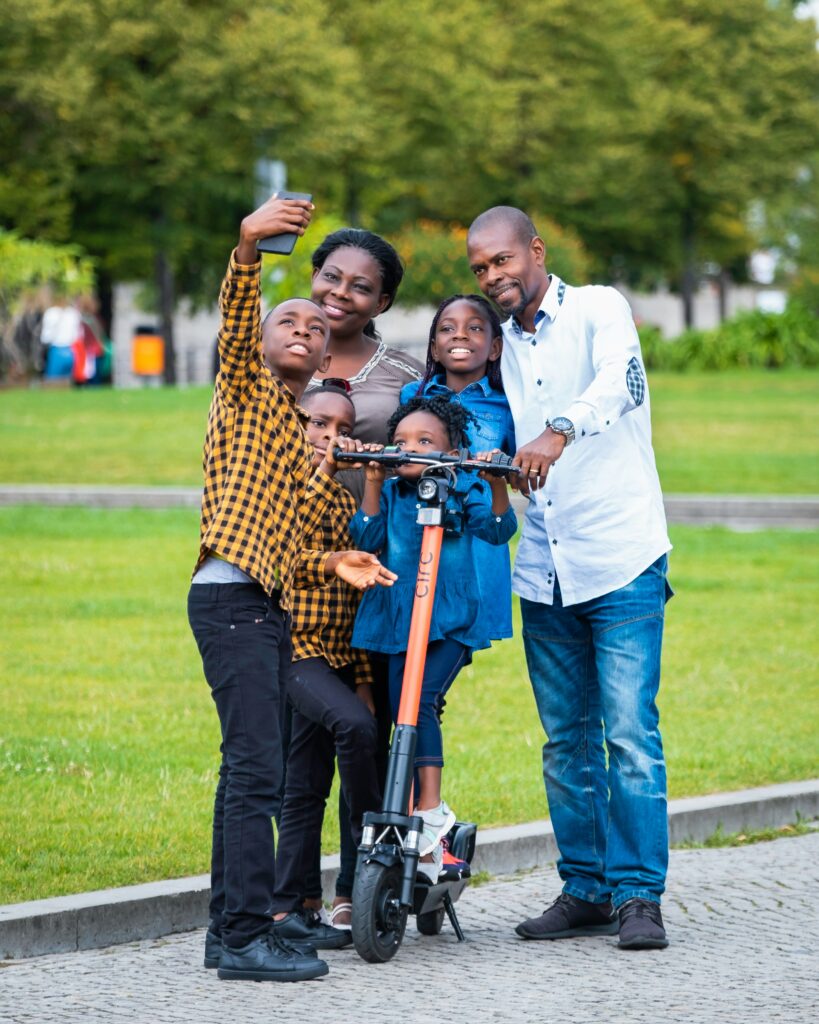
As parents, we always want what's best for our children. We strive to provide them with a loving and nurturing environment. Sometimes, despite our best efforts, our children may need extra support. Therapy for children can be a valuable tool in helping them navigate challenges and develop coping skills. In this blog post, we will discuss when to take your child for therapy, signs your child might need therapy, and how parents can be involved in the therapeutic process without getting in the way.
Understanding the Role of Therapy in Children's Lives
The purpose of therapy for children extends far beyond mere conversation. It's a structured environment where young ones can explore their innermost feelings, thoughts, and behaviors under the guidance of a trained professional. This safe space is instrumental in helping them face various challenges, ranging from academic pressures to personal struggles. Through therapeutic engagement, children acquire valuable skills that aid in emotional regulation, enhance resilience, and foster a positive self-image. These skills are foundational to their ability to adapt and thrive in different situations they encounter as they grow.
Therapy also acts as a bridge, connecting children to their potential by unlocking avenues for personal growth and self-discovery. It's a place where their voices are heard and validated, which is crucial for building trust and openness. Therapeutic sessions are tailored to the child's age, developmental stage, and unique needs. It ensures that the interventions are both accessible and engaging. Activities may include play, art, or conversation, each serving as a medium through which children can express themselves freely and creatively. By nurturing these expressions, therapy contributes to their overall well-being. It can prepare them for the complexities of life with confidence and adaptability.
Key Indicators Your Child Might Need Professional Support

Identifying the right moment to seek therapy for your child often requires astute observation of their behaviors and emotional responses. Notable signs that may indicate the need for professional support include a marked shift in mood or demeanor. This could be an unusual increase in irritability, sadness, or anger. You might also observe your child struggling with managing stress, displaying an overwhelming sense of worry or fear that doesn’t align with the usual ups and downs of childhood. Another red flag is a significant change in their eating or sleeping patterns. This can be symptomatic of deeper emotional turmoil.
Social withdrawal is another critical indicator. If your child is suddenly less interested in spending time with friends or participating in activities they once enjoyed, it could signal distress. Academic performance can also be affected. This can be seen as declines in grades or a reluctance to attend school potentially pointing to underlying issues. Additionally, an increased sensitivity to rejection or failure, manifesting in either aggression or retreat, can be a tell-tale sign of emotional struggle.
These indicators, particularly when persistent or intensifying, suggest that your child could benefit from the professional support therapy offers. Observing any combination of these behaviors warrants a closer look and potentially initiating a conversation about therapy, keeping in mind the child's overall well-being and the potential benefits of early intervention.
Common Misconceptions About Therapy for Children
Many parents harbor misconceptions about therapy for children that can hinder them from seeking timely help for their little ones. A prevalent myth is the belief that therapy is a sign of failure on the parent's part, suggesting they haven't managed their child's issues effectively. This misconception couldn't be further from the truth. Therapy is a proactive step toward understanding and resolving a child's challenges, emphasizing strength and resilience rather than failure.
Another widespread misconception is that children are too young to benefit from therapy. People often underestimate children's capacity to experience and communicate complex emotions. With the right approach, even young children can express themselves. They can gain insight from therapeutic interventions designed specifically for their developmental level.
There's also a belief that discussing problems in therapy might encourage negative behavior or exacerbate issues. On the contrary, therapy provides a controlled environment where children learn to articulate their feelings and develop healthy coping mechanisms. This safe exploration can prevent problems from escalating and teach children valuable life skills.
Lastly, some think therapy will make children dependent on professional support for life. In reality, therapy aims to equip children with the tools they need to navigate their emotions and situations independently. It fosters long-term resilience and emotional health. Addressing these misconceptions can open pathways to healing and growth for many families.
The Right Time to Seek Therapy for Your Child

Deciding the optimal moment to initiate therapy for your child can be nuanced and deeply personal. Observing persistent or escalating concerns in their behavior, emotional well-being, or social interactions can be significant indicators. Such signs might include uncharacteristic mood changes or heightened anxiety. It can also be difficulty in coping with daily stresses, or a noticeable decline in academic performance. It's important to acknowledge these signals without delay, as early engagement with a therapeutic process often leads to more effective outcomes.
Recognize that as a parent, your intuition about your child’s needs is valuable. If you observe behaviors or emotional states in your child that cause concern, it may be an indication to explore therapeutic options. Ultimately, the decision should be guided by a desire to support your child in achieving a healthier, more balanced state of well-being. Engaging in therapy should be viewed as a proactive measure, not a last resort. It can be a pivotal step towards fostering resilience and emotional health in your child.
How Parents Can Be Involved in Their Child's Therapy
Engagement and cooperation from parents are instrumental in enhancing the effectiveness of therapy for children. One of the primary ways parents can contribute is by establishing and maintaining an open line of communication with the therapist. This doesn’t mean infringing on the confidential space of the child’s therapy sessions. It means, staying informed about general progress and ways to support therapy goals at home. Following the therapist's guidance, parents can integrate specific strategies into daily routines. This can reinforce the skills their child is developing during sessions.
Being an active participant also involves educating oneself about the child’s challenges and the therapy process. Attending parent-focused sessions or workshops, when available, can provide valuable insights into understanding and managing your child’s needs more effectively. Additionally, creating a supportive home environment that mirrors the principles taught in therapy encourages consistency. It also aids in the child’s adaptive learning.
Moreover, it's crucial for parents to model healthy coping mechanisms and emotional expression. Children often learn by observing the behavior of adults in their lives. This makes it important for parents to demonstrate resilience and positive problem-solving in their own lives. Engaging in these practices not only assists the child's therapeutic journey but also fosters an atmosphere of mutual growth and learning within the family.
Preparing Your Child for Therapy

Introducing your child to the concept of therapy can be approached with sensitivity and openness. It's important to frame therapy as a positive and empowering step towards feeling better, rather than as a consequence of something being wrong. Use age-appropriate language to explain that the therapist is someone they can talk to about their feelings, thoughts, and anything that might be bothering them, in a place where it's safe to explore those feelings. Highlight that, like going to a doctor when we're physically sick, therapists help us when our feelings or thoughts need attention. Like a feelings doctor!
Encourage your child to view this as an opportunity to learn more about themselves and develop strategies to handle challenging emotions or situations. You can also alleviate any worries by discussing the structure of therapy sessions. This emphases the engaging activities they might do, like drawing or playing, which help in expressing themselves. Preparing them with reassurance and positivity paves the way for a more receptive and less apprehensive start to therapy.
Choosing the Right Therapist for Your Child
Selecting an appropriate therapist is a pivotal step in ensuring your child's therapeutic journey is both positive and impactful. Start by seeking a professional who is not only qualified but also specializes in pediatric mental health. Their expertise in dealing with children’s issues will be beneficial for addressing your child’s specific needs. Compatibility between your child and the therapist is also crucial; a therapist who resonates well with your child's personality and unique challenges can significantly enhance the therapy's effectiveness. Make an effort to understand the therapeutic methods being proposed. Therapists may employ various approaches, such as cognitive-behavioral therapy, play therapy, or others, depending on what they believe will best suit your child.

It’s advantageous to solicit feedback from your child after initial sessions. This can provide insights into how comfortable and understood they feel, which are key indicators of a fruitful therapeutic relationship. Furthermore, ensure that the therapist’s logistical details, like location and availability, align with your family's schedule and needs to facilitate a consistent therapy schedule.
Transparency regarding the therapy process and expected outcomes is also vital. A therapist who communicates openly with you about your child's progress and strategies for support outside of sessions can greatly contribute to a cohesive approach to your child's well-being. In essence, finding the right therapist involves a blend of professional qualifications and personal compatibility, underlined by a mutual commitment to your child's mental health journey.

In today's digital age, the internet plays a significant role in our daily lives. While it provides a wealth of information and opportunities for learning, it also poses risks, especially for young adolescents. As modern parenting continues to evolve, it is crucial for parents to navigate conversations about internet safety and age-appropriate content with their children. In this blog post, we will explore strategies for addressing this important issue and empowering parents to guide their children in the digital landscape.
Understanding the Digital Landscape and Its Impact on Adolescents
The digital world is an ever-changing environment filled with both opportunities and challenges. Adolescents, in particular, find themselves at the intersection of curiosity. The vast expanse of the internet at their fingertips, which is not without its pitfalls. The exposure to inappropriate content can range from mildly offensive to deeply disturbing. It can potentially affect their psychological development and shape their understanding of complex issues. This can happen before they are emotionally mature enough to process them. This landscape is not static. New apps, games, and social platforms emerge, often designed to capture and hold the attention of young users for as long as possible. This can lead to an excessive amount of time spent online, further increasing the risk of encountering harmful content.
Understanding this dynamic is vital for parents who aim to protect their children from these dangers. It's not just about the content but also about understanding how and why certain content appeals to adolescents. This comprehension allows parents to have more meaningful conversations with their children about their digital habits, the content they consume, and the potential impact on their well-being. In navigating this complex digital terrain, the goal is to equip young adolescents with the critical thinking skills needed to discern and make wise choices amidst a sea of endless digital possibilities.
Recognizing the Signs Your Child May Have Been Exposed to Inappropriate Content

Being aware of behavioral changes in your child can be a key indicator that they may have stumbled upon inappropriate content on the internet. These signs can manifest in various ways, such as an increased level of secrecy surrounding their online activities. For instance, they might quickly switch tabs or hide their screens when you approach. This can indicate they are viewing something they don't want you to see. Additionally, a sudden shift in mood or behavior could be a response to disturbing content they've encountered. An example might be them becoming more withdrawn or displaying unusual aggression or anxiety.
Another red flag could be an unexplained reluctance to participate in previously enjoyed activities. It may suggest their focus or interests have been negatively influenced by their online experiences. Observing these changes requires a nuanced approach, avoiding direct accusations which may close off communication lines. Instead, these observations should serve as a cue for parents to gently probe their child's online habits and feelings about their digital interactions. This method allows parents to gather insights into their child’s online world without causing them to retreat further into secrecy. Recognizing these signs is the first step in addressing potential exposure to harmful content and reinforcing a safe online environment for your child.
Initiating the Conversation: Tips for Modern Parents
Broaching the subject of internet safety and appropriate online content with your children doesn't have to be overwhelming. The key is to approach the conversation with empathy and understanding. Don't forget to recognize that the digital world is a big part of their lives. Begin by finding a comfortable setting that feels non-confrontational, perhaps during a casual family dinner or a car ride, which can make the discussion feel more natural and less like an interrogation. It's important to communicate your concerns without instilling fear or shame. Frame the discussion around their safety and well-being. Emphasize that your goal is to ensure they enjoy the internet's vast resources responsibly.
Encourage them to share their online experiences and any uncomfortable situations they might have encountered. This approach helps to normalize discussing internet usage openly. It reinforces that they can always turn to you for guidance without fear of retribution or harsh judgment. Use this opportunity to set mutual expectations about internet use. This should include discussing what types of content are not suitable and why. Highlight the importance of critical thinking and being cautious about the information they share or receive online. Make sure they understand that you're not trying to invade their privacy or limit their exploration but are interested in their safety and development. This conversation should be an ongoing dialogue, adapting as they grow and as the digital landscape changes.
Establishing Clear Internet Usage Guidelines

To maintain a balance between the benefits and potential risks of internet use, it is imperative for parents to implement and clearly communicate internet usage guidelines. Crafting rules about when and how long the internet can be used, as well as what types of content are off-limits, lays a foundation for healthy digital habits. This involves a collaborative effort where children have a say in setting these guidelines, making them more likely to adhere to the rules.
Additionally, explaining the rationale behind restrictions helps children understand the importance of these guidelines beyond mere rules. It fosters a sense of responsibility towards their online behavior.
It's also beneficial to designate tech-free zones or times within the home. This will encourage offline activities and interactions, promoting a well-rounded lifestyle. Regularly review these guidelines together, making adjustments as your child grows and as new challenges arise in the digital world. Through clear, consistent, and collaborative guidelines, parents can create a safer online experience that respects their child's independence while safeguarding them from potential digital dangers.
Educating Your Child About Internet Safety and Age-Appropriate Content
Empowering your child with the knowledge to navigate the internet safely is a crucial aspect of modern parenting. Begin by discussing the various types of content they may encounter online. Highlight the importance of discernment in what they view, share, and engage with. Explain the concept of digital footprints and the long-term implications of their online actions. Use real-world examples to illustrate how easily personal information can be shared and exploited if not careful. Encourage them to think critically about the sources of the information they find and to question the credibility of online content.
Introduce them to the idea of digital wellness, emphasizing the balance between online activities and real-life interactions. Provide them with strategies to deal with uncomfortable situations online, such as encountering inappropriate content or being approached by strangers. This should include knowing when and how to report such instances. It also includes the importance of discussing them with a trusted adult. By fostering an environment of learning and curiosity around internet safety, you help your child develop a healthy relationship with digital technology. This can ensure they become responsible and informed digital citizens.
Utilizing Parental Controls and Safe Browsing Tools

Leveraging parental controls and safe browsing tools offers an additional layer of protection for children navigating the internet. These tools provide a means to filter out harmful content, limit screen time, and monitor online behavior. It is done without infringing on a child’s sense of independence. Educating yourself on the various options available is key. There are browser settings that restrict access to adult content to apps that track the amount of time spent on social media platforms. Engaging with your child about why these tools are being implemented helps demystify their purpose. It presents them not as measures of control but as safeguards for their digital journey.
It’s also important to regularly update these tools to keep up with new threats and to adjust settings as your child grows older and their online needs change. Involve your child in this process to foster a sense of responsibility and awareness about their digital footprint. These proactive steps not only enhance your child's online safety but also teach them about the value of boundaries in the digital realm, setting the stage for responsible internet use as they mature.
Building Trust and Fostering Open Communication

Building trust and fostering open communication with your child is foundational in navigating the digital age together. This relationship is strengthened not by fear, but through honest and empathetic dialogue about their online experiences. Encourage your child to share both their positive and negative encounters on the internet. Make sure they feel heard and supported rather than judged. Highlight that mistakes are part of learning, ensuring they understand they can come to you with any issue without fear of punishment.
Active listening plays a crucial role. When your child speaks, give them your full attention, acknowledging their feelings and offering guidance when sought. Discuss your own experiences and challenges with technology. Show them that navigating the digital world is a continuous learning process for everyone. Regularly engage in conversations about their digital interests, and together, explore new and safe online spaces that align with their passions. This ongoing dialogue reinforces that you are a reliable ally in their digital exploration, cementing a bond of trust that encourages open communication about their online life.

Managing anxiety as a working parent can be an overwhelming task. Balancing the demands of work, family, and personal life can easily lead to feelings of stress and anxiety. In this blog post, we will explore some life hacks to help you manage anxiety and navigate the busy world of working parents.
Understanding the Roots of Your Anxiety
To effectively manage anxiety as a working parent, it's critical to pinpoint what specifically sparks these feelings. Anxiety can stem from a myriad of sources. This can be from, deadlines at work, the pressure of familial obligations, or even the internal quest for personal achievement. Delving into these triggers allows for a targeted approach in mitigating stress.
Reflect on moments when anxiety feels most potent and consider journaling these instances to uncover patterns or common themes. This process is not about placing blame but rather gaining insight into your emotional responses. By acknowledging these triggers, you equip yourself with the knowledge to develop tailored strategies. This can address your unique challenges, setting the stage for a more balanced and serene daily life.
Starting the Day on a Positive Note

Kicking off the morning with a positive mindset is a game changer for managing anxiety as a working parent. Consider implementing a morning ritual that nurtures your mental and emotional well-being. This could range from writing down three things you're grateful for, to visualizing your day unfolding in a positive way, or simply enjoying a quiet moment with your favorite cup of tea before the day begins. These practices not only help in setting a tone of gratitude and intentionality for the day but also equip you with a serene mindset to face the day's hurdles.
Engaging in physical activities can also invigorate your body and clear your mind, providing a double benefit. This can include a brief morning walk or yoga session. Incorporating such practices into your morning routine can significantly diminish anxiety levels. It can also boost your confidence to tackle the day ahead. Emphasizing this proactive start can be a cornerstone for a more balanced and joyful experience as a working parent.
Strategies for Effective Time Management
Mastering time management is key for alleviating anxiety for the working parent. An organized approach to your day can make a significant difference in how you perceive and handle stress. Begin by breaking down your tasks into manageable chunks, categorizing them by urgency and importance. This strategy enables you to focus on what truly needs your attention. It reduces the overwhelming feeling that everything is a priority. Utilize digital tools or planners to map out your week, allocating specific time slots for work commitments, family activities, and crucially, self-care and relaxation.
This holistic view of your schedule not only helps in balancing your responsibilities. It also in identifies opportunities to delegate tasks, whether at work or home. Remember, it's about working smarter, not harder. Effective time management also involves setting realistic deadlines and learning to say 'no' when necessary to avoid overcommitment. Each step taken to organize your time better is a step towards a less anxious and more fulfilling life as a working parent.
The Power of Mindfulness Throughout the Day

Incorporating mindfulness into your daily life as a working parent can act as a powerful tool to diminish anxiety and elevate your sense of well-being. This practice enables you to engage more fully with the present moment. It reduces the impact of stress and fostering a calm, focused state of mind. Throughout the day, find moments to pause and breathe deeply, centering yourself amidst the day's demands. These brief interludes of mindfulness can be as simple as taking a minute to notice the sensations of your breath or feeling the texture of an object in your hands, providing a quick reset for your mental state.
Consider setting reminders on your phone or computer to prompt these mindfulness breaks. This is especially useful during times you know are particularly stressful. During these pauses, focus solely on the present experience, letting go of concerns about past or future events. This practice can help break the cycle of continuous worry and anxiety that often accompanies the role of a working parent.
Additionally, incorporating mindfulness exercises can further enhance your ability to remain centered throughout the day. An examples of this can be focused breathing or mindful listening. By dedicating time to cultivate mindfulness, you pave the way for a more peaceful and present engagement with both your work and family life. This in turn, helps to manage anxiety with grace and resilience.
Building a Support System at Work and Home
Cultivating a reliable support network is pivotal for navigating the pressures of being a working parent with less anxiety. Engage with colleagues who understand your commitment to both your career and family. These connections can offer practical advice or a listening ear when you need it most. Don't hesitate to lean on friends or family members who can offer support. This can be lending an ear after a tough day or assisting with childcare duties.
An open dialogue with your partner about shared responsibilities and emotional support is also crucial. This collaborative approach not only eases personal stress but strengthens relationships by fostering mutual understanding and support. Additionally, exploring community resources or online support groups for working parents can extend your network. It can provide further opportunities for connection and advice. By proactively building and nurturing these support systems, you create a foundation of assistance and camaraderie that makes managing anxiety more achievable.
The Role of Physical Health in Managing Anxiety

Acknowledging the significant impact of physical health on anxiety management is vital for working parents. Engaging in regular physical activity is not just about keeping fit; it's a proven stress-reliever that can elevate your mood and enhance mental clarity. Finding an exercise regimen that fits into your busy schedule, whether it's a quick morning workout, a brisk walk during lunch breaks, or a yoga session to unwind in the evening, can be immensely beneficial.
Healthy dietary habits complement this approach, fueling your body with the nutrients it needs to combat stress effectively. Opt for whole foods rich in antioxidants, lean proteins, and healthy fats to keep your energy levels stable throughout the day. Equally important is ensuring you get adequate rest. Sleep deprivation can exacerbate anxiety, making it harder to cope with daily pressures. Strive to create a restful sleep environment and establish a calming bedtime routine to improve your sleep quality. Making these lifestyle choices a priority not only supports your physical well-being but also builds resilience against anxiety, enabling you to meet the demands of both your professional and personal life with greater ease and less stress.
Embracing Imperfection and Practicing Self-Compassion
In the journey of a working parent, it’s essential to acknowledge that perfection is unattainable. The pressures to excel in every aspect of life can be immense, yet it's crucial to understand that making mistakes or falling short at times is inherently human. Embracing imperfection allows us to see these moments not as failures, but as opportunities for growth and learning. This shift in perspective is liberating, reducing the anxiety that comes from striving for the unachievable.
Practicing self-compassion is equally important. It involves treating yourself with the same kindness and understanding you would offer to a friend in distress. When faced with challenges or setbacks, respond with empathy towards yourself, recognizing the difficult emotions without judgment. This gentle approach can significantly lessen the burden of anxiety. It encourages a healthier, more forgiving attitude towards oneself, fostering resilience in the face of day-to-day stressors. Remember, the journey of managing anxiety as a working parent is not about reaching perfection but about navigating the complexities of life with grace, understanding, and self-compassion.
Finding Joy in the Little Moments
In the whirlwind of daily responsibilities, it's easy for working parents to overlook the small, joyous moments that life offers. However, cultivating a habit of noticing and appreciating these instances can significantly counterbalance anxiety. Whether it's sharing a laugh with your child over breakfast, enjoying the quiet of the morning before everyone else wakes up, or feeling the satisfaction of ticking off an item on your to-do list, these moments are pockets of joy and peace amidst the chaos. Make it a point to consciously acknowledge them.
Perhaps, keep a joy journal where you jot down one thing each day that brought you happiness or made you smile. Over time, this practice not only becomes a repository of positive memories but also a reminder that happiness exists in the minutiae of everyday life. Encouraging your family to share their joyful moments can further amplify this effect, fostering an environment of positivity and gratitude. By valuing these small victories and pleasures, you can cultivate a more joyful, less anxious perspective on life, enhancing your overall well-being and that of your family.

In today's digital age, teaching has become more challenging than ever before. With the rise of millennial parenting styles and the prevalence of social media addiction across all age groups, educators are facing unprecedented levels of stress and burnout. Fortunately, Eye Movement Desensitization and Reprocessing (EMDR) therapy offers a promising solution to help teachers cope with the demands of their profession and support their students in navigating the complexities of modern education.
The Landscape of Modern Education and Millennial Challenges
The transformation of the educational environment in recent years has been profound, significantly influenced by the distinctive child-rearing practices of millennial parents. This generation of parents, having grown up with technology at their fingertips, often adopts a tech-savvy approach to parenting. This emphases open lines of communication and a partnership-oriented relationship with educators. However, this dynamic can lead to complexities in the classroom, as teachers strive to balance the digital-first expectations of millennial parents with the traditional educational values and practices.
Additionally, the millennial emphasis on individualized attention and customized learning experiences for their children can place added pressure on educators. People, who must navigate these demands while addressing the diverse needs of their entire student body. This shift has not only changed the way educators teach but also how they interact with parents. It requires new strategies and approaches to foster effective partnerships and promote student success in an ever-evolving educational landscape.
Understanding Social Media Addiction Across Ages

Social media's grasp extends far beyond a simple distraction. It weaves into the very fabric of students' lives across various age groups, cultivating an environment ripe for addiction. This pervasive issue sees young minds constantly battling for concentration amidst a barrage of notifications and digital interactions. It significantly impairs their academic capabilities and focus.
The allure of likes, shares, and instant communication holds a compelling sway, leading to a reduction in meaningful, face-to-face interactions and a dependency on digital validation.
Such addiction does not merely hinder educational outcomes. It also seeps into the mental health arena, potentially exacerbating feelings of isolation, anxiety, and depression among students. This complex web of digital engagement requires educators to adopt nuanced strategies to mitigate its impact. This encourages healthier online habits and fostering environments that prioritize both academic and emotional growth. In addressing social media addiction, the goal is to reclaim the attention and well-being of students, guiding them towards balanced, responsible use of technology.
The Psychological Toll on Educators

Navigating the dual pressures of millennial parenting expectations and the pervasive influence of social media, educators are enduring a significant psychological toll. The constant endeavor to balance digital-first approaches with traditional teaching methodologies. This, coupled with the need to engage students deeply entrenched in the digital world, places a unique strain on teachers. This relentless pressure exacerbates stress, propelling many towards feelings of anxiety and burnout.
Such emotional and mental fatigue not only impairs their capacity to provide high-quality education but also affects their personal well-being. The intensity of these challenges often leaves educators seeking strategies to safeguard their mental health while maintaining their commitment to fostering an enriching learning environment. In this milieu, the necessity for supportive interventions and coping mechanisms becomes paramount. It highlights the need for resources that can aid in managing the intricate dynamics of modern education.
Introduction to EMDR Therapy
EMDR therapy stands as a transformative approach within the therapeutic world. It is designed to aid individuals in processing and overcoming trauma, anxiety, and stress-related symptoms. This method employs bilateral stimulation, through eye movements or tactile tapping. It is a mechanism to facilitate the brain's processing of distressing memories and beliefs that contribute to emotional discomfort. Originating as a treatment for PTSD, its applications have broadened, showing effectiveness in addressing a range of psychological stressors. EMDR's unique capacity to accelerate the mind's natural healing processes presents a novel avenue for educators and students alike, grappling with the pressures of modern educational environments and digital disruptions.
Through targeted sessions, participants can experience relief from psychological burdens. It can pave the way for enhanced coping mechanisms and a renewed sense of mental clarity. This foundation in EMDR therapy elucidates its potential as a supportive tool in educational settings, aimed at ameliorating the emotional and cognitive challenges faced by today’s teachers and learners.
EMDR Therapy for Students

EMDR therapy holds significant potential for students ensnared in the challenges of navigating a digital-centric lifestyle and the stressors inherent in modern academic environments. This therapeutic approach is particularly adept at addressing the deep-seated psychological effects of social media overuse. This often manifest as heightened anxiety, decreased self-esteem, and impaired focus. Through the process of bilateral stimulation, students are guided to confront and reprocess negative beliefs or traumatic experiences that may be exacerbating their reliance on digital validation and hindering their academic and social development.
By integrating EMDR into student support services, educational institutions can offer a proactive pathway for students to break free from the cycle of digital dependency and its accompanying mental health issues. This not only aids in enhancing their emotional regulation and resilience but also cultivates a healthier relationship with technology. As students learn to manage their emotional responses and build a stronger sense of self-worth independent of online feedback, they're better equipped to engage fully with their educational journey.
Such therapeutic interventions can be instrumental in reorienting students toward more productive coping mechanisms. This encourages a shift from virtual spaces to real-world connections and learning. The adoption of EMDR therapy for student support underscores a commitment to nurturing not only the intellectual but also the emotional and psychological well-being of learners. It prepares them for a balanced and successful path through school and into adulthood.
Implementing EMDR in Educational Settings
The integration of EMDR therapy within schools represents a strategic approach to addressing the psychological challenges facing today's educational community. Key to this implementation is the professional development of educators and school mental health professionals, and equipping them with the skills necessary to facilitate EMDR techniques. Providing access to EMDR-trained therapists on campus can greatly enhance the support system available to both teachers and students.
Additionally, developing partnerships with local mental health organizations can expand resources and ensure a broad spectrum of support. Workshops and informational sessions could be organized to demystify EMDR therapy for the school community. It can highlight its benefits and potential to improve academic and emotional outcomes. By fostering an environment that values mental health as much as academic achievement, schools can cultivate resilience and well-being across their populations. This will empowers educators and learners to navigate the complexities of the digital age with confidence and support.
Conclusion and Moving Forward
The challenges presented by the intersection of millennial parenting, media addiction, and the demands of modern education require innovative solutions. EMDR therapy represents a powerful tool in this quest. It offers both educators and students a pathway to better mental health and resilience. As we look to the future, the importance of integrating psychological well-being strategies into the fabric of our educational systems cannot be overstated. Schools must become places where mental health resources, like EMDR, are readily accessible to address the complexities of today's digital and educational landscapes.
By equipping our teachers with the means to manage stress and burnout effectively, and providing our students with the skills to navigate their digital world healthily, we set the stage for a more positive and productive learning environment. The journey ahead will require commitment, collaboration, and open-mindedness from all stakeholders in the educational community. Embracing EMDR therapy as part of a comprehensive approach to mental health in schools is a critical step toward fostering an environment where everyone can thrive amidst the challenges of the 21st century.

In the realm of family dynamics, the role of fathers has often been overshadowed by the traditional notion that their primary duty is to provide financial support. This limited perspective underestimates the value that fathers bring beyond their wallets, leaving mothers to bear the weight of full-time jobs and childcare responsibilities alone. This skewed expectation not only overburdens mothers but also sends damaging messages to our children about gender roles and relationships. It's time to shed light on the critical role of fathers in child-rearing and household responsibilities. To challenge the outdated belief that active paternal involvement compromises masculinity.
The Evolution of Fatherhood in Family Dynamics
As society's norms and expectations have progressed, so too has the perception and reality of fatherhood within family dynamics. The traditional image of the father as merely a provider has transformed, giving way to a more comprehensive view that encompasses emotional, mental, and physical involvement. This transformation acknowledges fathers as crucial figures for emotional support, guidance, discipline, and active participation in day-to-day childcare. The evolution is partly driven by the changing landscape of the workforce, with more mothers entering full-time employment, thereby necessitating a shift in domestic roles. Additionally, a growing body of research underscores the positive impact of father engagement on child development, challenging old paradigms and encouraging a new generation of dads to embrace a hands-on approach to parenting.
This shift away from rigid gender roles towards a more egalitarian model not only enriches the father-child relationship but also contributes to a more balanced distribution of household and parenting responsibilities. As we continue to navigate these changing dynamics, it becomes clear that the modern father’s role is as much about emotional nurture and participation in the home as it is about providing financial support, marking a significant step towards a more inclusive understanding of fatherhood in today's world.
Unpacking the Financial Provider Stereotype

The stereotype that fathers primarily serve as financial providers has deep roots, yet it confines their role to a singular dimension that overlooks their broader impact on family life. This archetype not only restricts fathers' involvement in nurturing and caregiving but also devalues their potential to contribute in emotionally supportive ways.
Moving beyond this stereotype allows fathers to explore a full spectrum of parenting, from sharing in the joys and challenges of day-to-day child-rearing to being an active participant in household decisions and chores.
Embracing a more holistic view of fatherhood enables dads to forge stronger bonds with their children, offering them a model of gender inclusivity and emotional intelligence. Additionally, this shift can alleviate some of the pressures traditionally placed on mothers, promoting a more equitable sharing of parental duties. This reevaluation of the father's role challenges societal norms and encourages a family dynamic where both parents' contributions are acknowledged and valued, not simply for their economic worth but for their integral part in fostering a nurturing, supportive, and resilient family unit.
The Impact on Mothers and the Family Unit

When fathers actively engage in parenting and household responsibilities, the impact on mothers and the overall family unit is profound. Mothers, traditionally burdened with the lion's share of caregiving and domestic tasks, experience a significant alleviation of stress and an increased sense of partnership. This shared responsibility fosters a healthier work-life balance for both parents, reducing maternal burnout and enhancing family well-being. Moreover, it sets a powerful example for children, who learn the importance of equality, teamwork, and mutual support within the family.
By witnessing their fathers' active participation, children grow up with a more balanced view of gender roles, understanding that caregiving and emotional support are not solely women's responsibilities. This balanced approach to parenting leads to happier, more harmonious home environments, where all members feel valued and supported. The ripple effect of such dynamics encourages a culture of respect and collaboration, essential qualities for healthy, functional relationships both within and outside the family unit.
Breaking Down Gender Roles and Relationships
In today's society, the persistence of conventional gender roles continues to confine parents to outdated expectations that do not reflect the complexities of modern family life. By holding onto the belief that fathers should be the primary earners and mothers the chief caregivers, we limit the potential for a richer, more balanced familial interaction. This adherence to traditional roles not only hampers the emotional development and involvement of fathers but also unjustly burdens mothers with a disproportionate share of domestic and caregiving responsibilities. To foster a family dynamic that thrives on mutual respect, understanding, and shared duties, it is imperative to move beyond these archaic constructs.
Encouraging a departure from these norms enables families to model a dynamic of equality and shared responsibility, offering children a broader, more inclusive view of what it means to contribute to family life. In doing so, we not only challenge the status quo but also empower each family member to engage fully and authentically in their roles, free from the constraints of societal expectations. This shift towards a more egalitarian approach in parenting and household responsibilities is crucial for cultivating an environment where both parents can flourish in their individual and collective roles, demonstrating to children the value of collaboration, respect, and flexibility in family relationships and beyond.
The Myth of Masculinity and Parental Involvement

The prevailing notion that active fatherhood detracts from a man's masculinity is a significant impediment to balanced family involvement. This myth, deeply ingrained in societal norms, suggests that emotional availability and caregiving are at odds with traditional male characteristics. However, embracing these roles actually demonstrates profound strength and self-assurance. It is crucial to redefine masculinity to include the tenderness, empathy, and involvement in day-to-day family life that contribute to the holistic development of children. By challenging these outdated perceptions, fathers can reclaim their rightful place in the emotional and physical landscape of parenting.
This transformation not only benefits their relationships with their children but also models for future generations a more inclusive definition of what it means to be a man. Encouraging men to dismantle these barriers and engage fully in all aspects of parenting supports a family dynamic rich with diversity in care and interaction. The journey toward redefining masculinity to encompass the full spectrum of parental involvement is a vital step in fostering families where every member can thrive in an atmosphere of mutual respect and shared responsibilities.
The Benefits of Co-Parenting
Embracing co-parenting leads to a wealth of advantages that extend across the entire family unit. Children thrive under the care of both parents, gaining access to varied life lessons, emotional support, and a deeper sense of security. This dual involvement helps in the development of well-rounded individuals by exposing them to diverse problem-solving approaches, coping mechanisms, and nurturing styles. For parents, the shared responsibility lightens the individual burden, creating space for personal growth and stronger marital relationships.
The cooperative effort in parenting responsibilities fosters an environment of mutual respect and understanding, significantly reducing the potential for conflict and resentment. Such a dynamic promotes effective communication and teamwork, laying a solid foundation for children to learn valuable interpersonal skills. Furthermore, engaging in co-parenting allows for a more balanced lifestyle, where both parents can pursue their career ambitions while ensuring their family life remains a top priority. This approach not only enriches the parental experience but also models a healthy, collaborative, and supportive relationship for children, setting a precedent for their future relationships and parenting styles.
A Call to Action for Men and Women

The moment has arrived for a significant cultural shift in our understanding and appreciation of fatherhood within the context of family life. Both men and women must advocate for a more inclusive approach to parenting, highlighting the indispensable role fathers play in the emotional and developmental growth of their children. This endeavor requires a collective effort to dismantle the deep-seated stereotypes that limit paternal involvement to financial contributions. We need to foster an environment where fathers feel empowered and expected to engage deeply in the parenting process, from the tender moments of infancy to the complex challenges of adolescence.
Promoting the concept of co-parenting as a societal norm rather than an exception is essential. This includes encouraging workplaces to recognize and support the parenting roles of both fathers and mothers, thereby facilitating a more balanced distribution of domestic and professional responsibilities. Additionally, educational initiatives aimed at new and expecting parents can provide the tools and confidence needed for fathers to embrace their roles fully.
By uniting in this cause, we stand to benefit the fabric of our families, enhancing the well-being of all members and providing our children with a model of equality, cooperation, and respect. It’s about cultivating a generation that values emotional intelligence and mutual support, setting the stage for a future where the nurturing influence of both parents is not just welcomed, but expected. Let's commit to championing this change, for the betterment of our families and society at large.

Do you often find yourself feeling hollow, as if something within you is missing? This unexplainable feeling of emptiness could be more than just a passing phase of ennui. It might be linked to a less-talked-about yet prevalent form of childhood trauma - emotional neglect.
Understanding Childhood Emotional Neglect
Childhood emotional neglect is an insidious form of child abuse that often flies under the radar. Unlike physical neglect or abuse, it doesn't leave visible scars or bruises, making it less conspicuous and frequently disregarded. It can be defined as a failure by caregivers to provide the emotional support and attention that children need to flourish and grow.
This neglect might not be intentional; parents might dismiss, ignore, or trivialize their child's emotions due to their lack of understanding or their own unmet emotional needs. Regardless of the reason, this neglect leaves a lasting impression on the child. It's akin to an unseen emotional void that the child carries forward into their adult life, often manifesting as a pervasive feeling of emptiness.
The impact of this neglect can be profound and far-reaching, affecting the child's ability to form healthy emotional connections and often resulting in feelings of inadequacy, unlovability, or a sense of being fundamentally flawed. Recognizing this form of neglect is the first step towards understanding the emptiness you might be feeling.
The Invisible Scars of Emotional Neglect

Emotional neglect etches deep, unseen imprints on a child's emotional fabric. Our emotional needs in childhood are equally important as our physical ones. They help us construct a healthy sense of self-worth. When these needs are consistently unfulfilled, it can disrupt our emotional development. This disruption often translates into a lingering feeling of being unwanted, insufficient, or inherently flawed.
These invisible scars have a profound influence on the child's self-esteem and perception of self-worth, subtly shaping their personality and their perspective of the world. Though invisible to the naked eye, these scars run deep, influencing every interaction and relationship in their adult life. So, while these wounds may not be visible, their impact is seen and felt in various aspects of the individual's life, often appearing as the unshakeable feeling of emptiness we're discussing here.
The Connection Between Emotional Neglect and Feeling Empty
The lingering sense of emptiness you experience as an adult may be deeply rooted in the emotional neglect you experienced during your childhood years. This persistent emptiness typically stems from not having our emotional needs adequately addressed during critical developmental stages, creating an emotional deficit. Such neglect may lead to difficulty in forging a strong emotional connection with oneself and others, resulting in a pervasive feeling of emptiness. You might feel like you're observing life from the outside looking in, or find yourself often feeling emotionally detached, and struggling to find pleasure or purpose in day-to-day experiences. This internal void, although invisible and often misunderstood, is a significant indicator of unmet emotional needs from childhood, manifesting itself in your adult life. This connection between childhood emotional neglect and the ongoing feeling of emptiness is a critical piece in understanding and addressing the root cause of such distressing emotions.
Signs You Might Have Experienced Childhood Emotional Neglect
Recognizing emotional neglect can be tricky because it’s often about the absence of emotional support and care rather than outright harm. But, there are several indicators you can look for. You may have a hard time identifying or verbalizing your emotions. Do you often feel like you don't fit in or belong, no matter where you are? If you’re overly sensitive to rejection or criticism, this could be a sign.
You might also find yourself with a powerful fear of dependency, finding it hard to rely on others for help or support. You could be wrestling with self-discipline issues or have a penchant for perfectionism. These are all signs that may hint at past emotional neglect. Keep in mind, these signs are not definitive proof but potential markers. If you find yourself identifying with a lot of these signs, it might be beneficial to reach out to a mental health professional for a deeper exploration of your feelings and experiences.
Healing from Childhood Emotional Neglect
The path to recovery from childhood emotional neglect is a voyage of self-understanding and self-love. It commences with acknowledging and coming to terms with your past experiences. The subsequent stage involves cultivating an intimate bond with your own feelings and requirements. This could entail seeking professional guidance, delving into mindfulness practices, cataloging your emotions through journaling, or cultivating habits of self-care. Unraveling the emotional neglect of the past isn't a journey you have to embark on alone. Therapists who specialize in this area can provide invaluable guidance and support.
Self-Care and Emotional Nurturing
One of the most essential components on your journey to healing from childhood emotional neglect is practicing self-care. This goes beyond maintaining your physical well-being with regular exercise and nutritious meals. Yes, taking care of your physical health is vital, but healing from emotional neglect necessitates nurturing your emotional health, as well. Establish and enforce healthy boundaries in relationships to safeguard your emotional space. Cultivate a practice of self-compassion. Be patient with yourself, offering the same grace and kindness you would to a dear friend.
Find joy and comfort in activities that resonate with you, that make your heart sing and your soul feel at peace. Making your emotional well-being a priority isn't selfish; it's necessary. You've spent a lifetime carrying the weight of emotional neglect, it's high time to put it down and nourish your emotional health. Remember, self-care isn't indulgence, it's fundamental to your healing process. Be gentle with yourself. You are worthy of love, care, and kindness.
Reach Out - You're Not Alone
Recognizing that hollow feeling inside you as a sign of childhood emotional neglect is the first crucial step towards healing. Now, the journey towards recovery begins. Remember, you don't have to traverse this path alone. Confide in loved ones, share your experiences, and allow them to offer you support and encouragement. Consider joining a support group; engaging with others who have had similar experiences can be incredibly affirming and healing.
If you're comfortable, seek help from mental health professionals specializing in childhood trauma. They can provide you with effective strategies and techniques to help you understand and overcome the impact of emotional neglect. Reaching out may feel daunting, but the rewards are tremendous. The path to recovery may be long, but you'll find strength, resilience, and healing along the way. You've been carrying the burden of emotional neglect long enough, it's time to lighten the load. Let people in, let them help, and remember, you are deserving of love and care.

As parents, it's often our first instinct to shield our children from failure. We support them, help them, and often extend our helping hand with their homework to ensure their success. However, the question arises: When is it appropriate to let your children fail? At what age can you stop helping them with homework before it becomes a battle each time? Is it our own insecurities that make us hard on our children? In today's blog post, we'll delve into these delicate issues and explore how the therapy method EMDR can be beneficial in this situation.
The Value of Allowing Children to Fail
Navigating the tumultuous waters of parenthood, it can be heart-wrenching to witness our children grapple with failure. Yet, it's crucial to remember that these moments of defeat are stepping stones on the path to self-improvement and resilience. By experiencing failure, children learn the invaluable art of problem-solving, fortify their resilience, and cultivate a positive attitude towards overcoming obstacles.
While it might feel instinctual to swoop in and save the day during homework crises, doing so can inadvertently strip them of these crucial life-building opportunities. Our intent is not to advocate for a hands-off approach that borders on neglect. Instead, the focus should be on fostering an environment where children feel secure enough to stumble, pick themselves up, learn from their blunders, and move forward with newfound wisdom and self-confidence.
On this journey, it is not the fall that shapes the child but their capacity to rise each time they stumble. As parents, our role morphs from fixers of problems to cheerleaders of resilience, applauding their determination, and celebrating their growth, one homework assignment at a time. As a result, allowing children to experience failure is not a sign of deficient parenting; it's a testament to our commitment to raising individuals who can bravely face challenges and come out stronger.
Finding the Right Balance in Homework Help

Navigating the homework waters can be a tricky task. It's a part of parenting, a normal routine, but knowing when to reel in the rescue rope can be a bit complex. As children progress through their educational journey, they need to build a sense of self-reliance. Our role gradually needs to transition from homework helper to a facilitator who empowers independent thinking.
This doesn't mean stepping away completely and leaving them in the lurch. You can't just stop helping with homework cold turkey. It's more about fostering an atmosphere of independence, promoting their self-confidence, and honing their problem-solving abilities. For instance, instead of providing outright answers, nudge them towards finding their own solutions. Give them the tools to critically think, explore, and discover. Guide them with constructive questioning or provide directional support without giving away the answers.
Gradually reducing the extent of help provided is also an effective strategy to keep homework from turning into a battleground. This encourages children to take up more accountability for their education, teaching them the crucial skill of responsibility. Eventually, they may feel confident enough for you to stop helping them with their homework!
Remember, this is a journey, not a race. Mistakes will be made, and tasks might take longer to be accomplished. But each step your child takes independently is a significant stride towards confidence, resilience, and problem-solving mastery. This journey will not only prepare them for academic success but equip them for the challenges that life will undoubtedly throw their way.
Uncovering Parental Insecurities

Uncovering parental insecurities is not only critical for the overall emotional health of parents, but it can significantly affect the upbringing of their children. If unaddressed, these insecurities can contribute to parenting styles imbued with high levels of control or anxiety symptoms. Thus, to break this cycle, therapies such as EMDR and counseling for teens, can be beneficial in addressing these insecurities, modifying anxiety symptoms, and promoting healthier parenting styles. In particular, EMDR therapy can help parents reprocess traumatic memories that may fuel their insecurities, whereas counseling for teens may assist in alleviating anxiety symptoms caused by parent-child dynamics. With improved parental awareness and more proactive anxiety treatment, healthier parenting styles can be established for a more harmonious family environment.
For instance, a parent dealing with insecurities originating from a tumultuous childhood may find themselves excessively checking their teenager's homework, seeking control and comfort in their child's academic success. This same teenager, under such persistent scrutiny, may develop stress and anxiety about their school performance.
Through EMDR therapy and counseling for teens, anxiety symptoms can be successfully managed and detrimental parenting styles rectified. This results in a healthier, happier, and more balanced family life for everyone involved.
How EMDR Can Help
Eye Movement Desensitization and Reprocessing (EMDR) therapy is not only for trauma survivors. In the context of parenting and homework, it can serve as an effective tool for parents. They can confront and manage their anxieties that may be influencing their parenting approach. EMDR can help to reprocess these anxious thoughts, shifting them from a place of fear to a mindset of understanding and empathy. This change can foster a more compassionate and patient parenting style.
On the other side, children who are dealing with the stress of academic pressure may also benefit from EMDR. Homework and academic challenges can sometimes be overwhelming, leading to an increased anxiety level. EMDR can assist in alleviating this distress, allowing them to approach their studies with a calm and composed mindset.
The technique involves the process of bilateral stimulation - typically through eye movements, tactile tapping, or auditory tones - while the individual recalls the stressful event. By doing this, EMDR works to modify the memories or fears associated with it, making them less distressing. For both parents and children, this can lead to a more positive and effective approach to homework. This will reduce the potential for battles and increase the potential for growth.
In essence, EMDR can help create a healthier learning environment by addressing and managing the root cause of academic-related stress and anxiety. By fostering a calm, patient, and understanding atmosphere, both parents and children can navigate the journey of education with increased resilience and confidence.

How Does Trauma to One Family Member Affect the Entire Family Unit?
When a family member is traumatized it can have a ripple effect on the entire family unit. The nuclear family being parents, partners and siblings will often endure the shock to the system when one member of the family experiences trauma. These family members can either serve to be supports or obstacles to the member of the family that experienced trauma. At their worst the family unit itself can become a system in which the traumatized individual is essentially retraumatized continually based on their families treatment towards them, opinions about them or new role they cast for them after the traumatic experience occurs.
What Does This Look Like When a Child is the Victim of Trauma?

Children are incredibly resilient beings and can overcome trauma or have the effects significantly minimized by having supportive, empowering and understanding parents. When the parents' response to the traumatic situation is negative it can be more traumatized to the child then the direct trauma exposure.
For example, if a teenage girl is raped by a stranger and the parents belittel and blame the teenager for “being stupid”, not “knowing better”, dressing a certain way or being in a certain place- this inevitably leaves that child feeling like they are to blame for what happened to them and something is inherently wrong with them to have caused such a thing to occur. This can leave that teenage girl feeling hopeless, lost, unsupported and very alone.
If she then begins to act out and becomes promiscuous, or her grades drop because she has PTSD and cannot focus as well, or become irritable and has more outbursts towards the parents, the child again will likely be blamed for their behavior. All of her cries for support, her showing she is struggling will only continue to serve the narrative that that child is inherently bad, defective, and unlovable. The parents' reaction to her only continues to show her the world is unsafe, unsupportive, and people in general are not to be counted on or trusted.
Consequences of When it is Not Discussed
Well meaning parents who struggle to cope with what happened to their child may shy away from conversations about how it’s affecting the child and carry on as if nothing happened- minimizing the effects of what happened to that child. This can foster children feeling all those same feelings, unloved, unsupported but also fosters this idea that “it’s in my head”, “it wasn’t that bad” or “I have no reason to still be upset/sad/angry” causing them to bury their shame, guilt and fears as it is not welcomed to discuss in the household.
In both cases, parents' own trauma may account for their responses. A parent may be too triggered by that child’s sexual abuse to listen to them discuss it causing scenario 2. Alternatively, the parent could have their own history of sexual assault and blame themselves so they project their anger and blame on the child as they never fully coped with what happened to them. Furthermore, a parent’s lack of experience dealing with trauma themselves can cause them to feel inadequate in supporting their child in coping with trauma.
What Effect Can a Traumatized Parent Have on Their Children?

There are two main ways that children are affected when a parent is traumatized:
- Witnessing a parent’s trauma.
- Experiencing posttraumatic symptoms of the parent.
1. Witnessing a Parents Trauma
Witnessing could be through a child witnessing domestic violence or sexual assault of their parent. Children who witness a parent’s trauma may feel fearful and anxious. They may always be on guard, wondering when the next violent event will happen, waiting for the next shoe to drop. This can be seen in different behaviors depending on the child’s age.
Family Trauma Signs in Children under 5:
- Regressive behaviors such as bed wetting, thumb sucking and increased need for attention (whining/crying).
- Difficulty falling and/or staying asleep
- Development stutters
- Development of fear-based behaviors such as hiding
- Severe symptoms of separation anxiety
Signs in Elementary School Children:
- Feelings of guilt and self-blame for the abuse
- Low self esteem
- Decrease in academic performance
- Increased behavioral issues at school
- Difficult making and keeping friends
- Somatic complaints such as stomach aches or headaches with no known medical cause
Signs in Teens:
- Acting out or oppositional behaviors
- High-Risk Behaviors such as unprotected sex, drug/aclohcol use, stealing, crimal behaviors
- Low self-esteem
- Low threshold for stress
It is important to note that there is a distinction between common behaviors for girls and boys- though this does not mean it cannot present in the opposite way. Boys are more likely to engage in oppositional, aggressive, and what we would generally call “acting-out” activities. Girls are more likely to “act-inward” and thus struggle with low-self esteem, depression, self-harming, and socially isolative behaviors.
2. Experiencing posttraumatic symptoms of the parent

When individuals struggle with PTSD they can have a range of symptoms that have an effect on their children and spouse. The 2 most common that affect the family unit are: re-experiencing symptoms and avoidance and numbing symptoms.
Re-Experiencing Symptoms:
PTSD can cause flashbacks and/or nightmares which are what we call re-experiencing symptoms. These symptoms can occur quickly and seemingly to bystanders as “out of nowhere”. They usually bring with them strong feelings and emotions of guilt, shame, anger, grief or fear. For some individuals the flashbacks can be so severe they feel as if the memory is occurring in real time. To children and partners this can be quite scary. The parent’s behavior is unpredictable. They may not understand why the family member is acting this way or what caused it. It can cause children to worry about that parent, feeling that their parent is too fragile to take care of them. For a partner it can put them in a caregiver role and make them feel hopeless about how to get their partner back to who they were before the trauma.
Avoidance and Numbing Symptoms:
It is common for anyone experiencing PTSD to try to avoid trauma reminders and/or triggers. This may cause them to avoid people, places and things that remind them of their trauma. It can also cause them difficulty in experiencing joy and pleasure in things they used to love. Leaving that family member to feel detached or cut-off from their partner and children. Avoidance and Numbing can leave partners and children feeling unloved, unsupported and unimportant. They may be hesitant to go to family events, holidays, kids games and struggle to connect with and engage with their loved ones like they used to.
Because the re-experiencing symptoms are so upsetting, people with PTSD try not to think about the event. If you have PTSD, you may also try to avoid places and things that remind you of the trauma. Or you may not feel like doing things that used to be fun, like going to the movies or your child's event. It can also be hard for people with PTSD to have good feelings. You may feel "cut off" from family and children. As a result, children may feel that the parent with PTSD does not care about them.
How Does Trauma of One Sibling Effects the Other Siblings?
In my work, I have seen children whose siblings have experienced trauma struggle with many of the same trauma reactions and negative core beliefs. This is often due to parents focusing on trying to help the traumatized child and thus the sibling feeling neglected or pushed aside and unsupported. These children then tend to have a lot of the same acting-out or acting-in behaviors we described above. Many of them struggle with core beliefs of “I am responsible” “I have to be in control”; “I am unimportant/unlovable/defective”. This also occurs in children who are terrified of what happened to their sibling, happening to them or anyone else they love. This can make a child chronically anxious and fearful of the world.
Where to Start if You're Struggling With Family Trauma

If this is all feeling a bit “close to home” you may want to reach out for support for yourself and your loved ones. Therapy will focus not just on the individual who has experienced trauma but also incorporate family sessions so that we work though any re-traumatizing interactions that are occurring within the family system. Here at Long Island EMDR we are all perfectly imperfect humans who have been through our own “stuff”. We will not judge you, what happened or the aftermath. Our goal is to help you and your family work through what has happened so that you can feel and be the close, loving supportive happy family that you once were or that you long to be. No judgment. Just support and encouragement.
What Therapy Will Look Like for Family Trauma:
Our assessments will focus on both individual and interpersonal consequences of the trauma, including parent-child interactions, discipline, communication and other areas of family functioning. Depending on your family situation, we may recommend individual sessions for multiple family members who are being affected by the aftermath of the trauma, in conjunction with family sessions to work on the interpersonal relationships when everyone is ready. As always our approach will be tailored to each unique family and individual. We have a range of therapists and modalities, including: EMDR, TF-CBT, art therapy, bereavement counseling and couples counseling, to ensure that each family and family member has an approach that works for them.

Have you ever wondered how childhood trauma impacts adolescents or adults? Do you find yourself asking yourself how much your childhood has a impact on your relationships today? Childhood experiences, both positive and negative, have major impact on our emotional development and how we continue to interact in the relationships around us.
Childhood is where our attachment styles are developed and our parents are our primary attachment figures. The way they respond to us in childhood shapes our worldview, or perception of the world, and how we expect others to respond, relate and interact with us. This is the foundation of whether or not a child will feel the world is safe and whether or not those around them will accept them.
Erikson called this our view of “trust or mistrust”. Is it a safe place to venture out and take emotional risks? Are all people generally good or are they out to hurt us and therefore untrustworthy? Can we trust others to support us in times of emotional need or crisis or do I need to rely on myself?
Complex trauma refers to the prolonged exposure to a stressful event, or repeated traumatic events layered on top of another. This would include children, who have grown up in physically, sexually, and/or emotionally absent or abusive households, as well as children who grew up in unsafe communities, an incarnated parent or a parent with mental health or substance use concerns.
How Childhood Trauma Continues to Effect us into Adulthood

Without the safety net of a secure attachment relationship, children experiencing childhood trauma grow up to become adults who struggle with poor self-esteem and difficulty with emotional regulation. They continue the unhealthy relationship patterns of their childhood with partners, friends and family members. These adults also have an increased risk of developing depression and anxiety.
The following are the four basic attachment styles. Please keep in mind that these descriptions are very general; not everyone will have all these characteristics. Attachment styles are relatively fluid and can be ever-changing depending on your partner’s own attachment style and the adaptations you make as you grow and learn.
Secure Attachment in Adults
These individuals usually grew up in a supportive environment where parents consistently responded to their needs. Securely attached individuals feel comfortable in their own skin, easily share feelings with partners and friends and seek out social support. These individuals have a generally positive outlook on life and seek physical and/or emotional intimacy with minimal fear of being rejected or overwhelmed.
Securely attached individuals, much like their parents were to them, are generally consistent and reliable in their behaviors toward their partner. They also tend to include their partner in decisions that could affect their relationship or life goals.
Dismissive-Avoidant Attachment in Adults
Children develop this attachment style when their primary caregivers are not emotionally responsive or are rejecting of their needs.
Children learn to pull away emotionally and be overly self-reliant, as means to avoid feelings of rejection. As adults, they become uncomfortable with emotional openness and downplay the importance of relationships.
These adults tend to place a high priority on their own independence from others and tend to be extremely self-reliant. They develop techniques to reduce feelings of being overwhelmed and defend themselves from perceived threats to their “independence.”
These techniques include, shutting down, sending mixed messages, and avoiding. These coping techniques end up becoming detrimental to their adult relationships.
Fearful-Avoidant Attachment in Adults
Children who have developed this style of attachment may have been exposed to prolonged abuse and/or neglect. Their primary caregivers are a source of hurt, rather than fulfilling their vital role of providing support and comfort.

These children grow up to become adults who depend on others but avoid intimacy in their relationships due to fear of rejection. As adults they have lower self-esteem and high anxiety in relationships.
As adults they see the value in having close relationships but due to the abuse they received have a difficult time trusting others. Due to this distrust, they avoid being emotionally vulnerable with others and have difficulty clearly expressing their wants and needs, as they fear it will lead to more hurt and rejection.
Anxious-Preoccupied Attachment in Adults:
Children with anxious-preoccupied attachment had caregivers who did not consistently meet their needs, as in their responses to the child were not consistent or predictable. Their parents were nurturing, caring and attentive at times but this was alternated with cold, rejecting or emotionally detached behaviors.
This alternation between love and rejection makes it difficult for a child to know what to expect from day to day. These children then grow up to be adults who require a lot of connection, closeness and attention within their relationships, sometimes to the point of being “clingy.”
Individuals who have this attachment style may need more validation and approval from loved ones than the other attachment styles.
Neurobiology of Attachment and Childhood Trauma

As products of our own environments, adults will often find themselves repeating the same behaviors witnessed and experienced in childhood. This is because the neural pathways developed from childhood traumatic experiences shape keep us stuck in these unhealthy patterns and ways of relating.
As products of our own environments, adults will often find themselves repeating the same behaviors witnessed and experienced in childhood. This is because the neural pathways developed from childhood traumatic experiences shape keep us stuck in these unhealthy patterns and ways of relating.
To say all of this is not meant to place blame on caregivers for the types of relationships formed in your adult life. However, increasing awareness of your own attachment style can help you take those first steps towards recognizing patterns and improving your relationships as an adult. With newfound awareness you can move to form securely attached relationships with your partner and with your own children.
Processing those difficult childhood memories of abuse and neglect can help you to make new neural connections with more adaptive experiences in your life and thus alter that inner-voice that keeps your stuck in poor patterns of behavior.
Where to go From Here?
At Long Island EMDR, we understand how complex childhood trauma affects you as an adult, which is why we specialize in EMDR and trauma-focused therapies. We are here to help guide and support you through your journey of processing past hurts and forming healthier connections.
Keep Shining,
Parenting is a challenging journey on its own, but it can become even more difficult when the parent has ADHD. The constant struggle to stay organized, focused, and on top of responsibilities can take a toll on both the parent and their child. However, there is hope. EMDR therapy, a unique and effective form of therapy, has shown promising results in helping parents with ADHD better manage their symptoms and become more confident and capable in their role as a parent. In this blog post, we will explore the struggles of parenting with ADHD and how EMDR therapy can be a valuable tool in navigating this challenge.
Understanding ADHD in Parents
Parenting is a challenging journey that requires patience, focus, and organization. But what happens when the parent themselves has ADHD? Attention-Deficit/Hyperactivity Disorder, or ADHD, is a neurodevelopmental disorder that affects both children and adults. It is characterized by difficulties in maintaining attention, hyperactivity, and impulsivity. When a parent has ADHD, it can add an extra layer of complexity to the already demanding role of being a caregiver.

Understanding ADHD in parents is crucial in order to navigate this unique challenge. For parents with ADHD, the struggle to stay organized and focused can make even the simplest tasks feel overwhelming. Time management becomes a constant battle, leading to feelings of frustration and guilt. The ability to juggle multiple responsibilities can become incredibly challenging, leaving parents feeling overwhelmed and inadequate.
Additionally, ADHD can also impact a parent's ability to provide structure and consistency for their child. The lack of organization and planning can lead to inconsistency in parenting styles, which can be confusing for the child and create additional challenges in their development.
It's important to recognize that ADHD is a real and valid condition that requires understanding and support. By acknowledging and addressing the specific challenges that parents with ADHD face, we can begin to develop strategies and interventions that can help alleviate some of the burdens they face. In the next section, we will explore the struggles of parenting with ADHD in more detail, shedding light on the daily obstacles that parents with ADHD must overcome.
Struggles of Parenting with ADHD
Parenting is already a challenging task, but when a parent has ADHD, it can become even more overwhelming. The daily struggles of managing ADHD symptoms while also trying to meet the needs of your child can take a toll on both the parent and the child.
One of the main struggles for parents with ADHD is the difficulty in staying organized and focused. Simple tasks that seem easy for others can feel insurmountable for someone with ADHD. Time management becomes a constant battle, and feelings of frustration and guilt can easily arise. Juggling multiple responsibilities can be incredibly challenging, leaving parents feeling on edge and not good enough.
ADHD can also affect a parent's ability to provide structure and consistency for their child. The lack of organization and planning can lead to inconsistency in parenting styles, which can be confusing and unsettling for the child. This can create additional challenges in their development and may cause the child to struggle with routine and expectations.
Furthermore, the impulsivity that often accompanies ADHD can also be a struggle for parents. Impulsive reactions and decision-making can lead to unintended consequences and can make it difficult to maintain a calm and controlled environment for the child.
Overall, parenting with ADHD is a daily battle. However, it's important to remember that you are not alone. There are strategies and interventions available to help parents with ADHD navigate these challenges and become more confident and capable caregivers. In the next sections, we will explore the benefits of EMDR therapy, how it works, and finding a therapist to guide you through this unique form of therapy.
Benefits of EMDR Therapy for Parents with ADHD
EMDR therapy, Eye Movement Desensitization and Reprocessing, has shown promising benefits for parents with ADHD. This unique form of therapy can help alleviate the struggles that come with parenting while managing ADHD symptoms. Here are some of the benefits of EMDR therapy for parents with ADHD:
1. Reduction of ADHD symptoms: EMDR therapy has been found to be effective in reducing the symptoms of ADHD, such as difficulties with attention, focus, and impulsivity. Through targeted eye movements or other forms of bilateral stimulation, EMDR therapy helps reprocess traumatic memories and negative beliefs that may contribute to ADHD symptoms.
2. Improved executive functioning: EMDR therapy can enhance executive functioning skills, such as organization, planning, and time management. By addressing underlying emotional issues and working through past traumas, parents can develop new coping strategies and improve their ability to stay organized and focused.

3. Enhanced self-confidence: Many parents with ADHD struggle with feelings of inadequacy and self-doubt. EMDR therapy can help parents develop a more positive self-image and improve their self-confidence as a parent. By reprocessing negative experiences and beliefs, parents can gain a greater sense of their strengths and abilities.
4. Improved parent-child relationship: EMDR therapy can also benefit the parent-child relationship. By addressing and resolving emotional issues that may contribute to parenting challenges, parents can develop healthier and more secure attachments with their children. This can lead to improved communication, trust, and overall family dynamics.
5. Long-lasting results: EMDR therapy has been found to have long-lasting effects. Many parents report continued improvements in their ADHD symptoms and parenting abilities even after therapy has ended. This means that the benefits of EMDR therapy can extend beyond the therapy sessions and have a positive impact on parenting in the long term.
How EMDR Therapy Works
EMDR therapy, Eye Movement Desensitization and Reprocessing, is a unique and effective form of therapy that has shown promising results in helping parents with ADHD. But how exactly does EMDR therapy work?
EMDR therapy is based on the understanding that traumatic or distressing experiences can get stuck in our brains, causing negative beliefs and emotional distress. These unresolved experiences can contribute to ADHD symptoms and difficulties in parenting. EMDR therapy works by targeting and reprocessing these traumatic memories, allowing the brain to process them more healthily.
During an EMDR therapy session, the therapist will guide the parent through a series of eye movements or other forms of bilateral stimulation. This bilateral stimulation helps stimulate the brain's natural ability to heal and reprocess traumatic memories. As the parent follows the therapist's hand movements or listens to sounds alternating in each ear, the brain's attention is split, allowing the distressing memories to be processed more effectively.
As the parent reprocesses these traumatic memories, they can experience a reduction in ADHD symptoms and an improvement in executive functioning. Negative beliefs about themselves as parents can be challenged and replaced with more positive and empowering beliefs. This leads to improved self-confidence and a stronger parent-child relationship.
EMDR therapy is a collaborative process, with the therapist providing a safe and supportive environment for the parent to explore their experiences and emotions. Each session builds on the progress made in the previous session, allowing for a gradual healing process.
Finding a Therapist for EMDR Therapy

Finding a qualified therapist who specializes in EMDR therapy can greatly benefit those managing ADHD symptoms and navigating the challenges of parenting. To find the right therapist for you, follow these tips:
1. Research online: Begin by searching online directories and therapist listings in your area. Look for therapists who specialize in EMDR therapy, have experience working with individuals with ADHD, and possess relevant credentials and experience. Read any reviews or testimonials from previous clients. The EMDR International Association website is a good start!
2. Seek recommendations: Reach out to your personal network for recommendations. Ask friends, family members, or support groups who have undergone EMDR therapy or know someone who has for their experiences. This can provide valuable insights and help you find a therapist who suits your needs.
3. Consult with professionals: Consider seeking recommendations from mental health professionals, such as psychologists or psychiatrists, who specialize in ADHD or trauma. They may be familiar with therapists who utilize EMDR therapy and can provide referrals.
4. Take advantage of consultation sessions: Many therapists offer free consultation sessions or phone calls to discuss their approach and answer any questions you may have. This can give you a better sense of the therapist and whether they are a good fit for you.
5. Trust your instincts: It is important to trust your instincts when choosing a therapist. Find someone you feel comfortable with and can build a strong therapeutic relationship with. Don't be afraid to ask questions and voice any concerns you may have during the consultation process.
Remember that finding the right therapist is a personal and individual process. Take your time, do your research, and trust that you will find the right therapist who can support you in managing your ADHD symptoms through EMDR therapy.
Other Resources and Coping Strategies for Parenting with ADHD
Parenting with ADHD can be a daily battle, but there are resources and coping strategies that can help alleviate some of the challenges and help you feel better connected with your family. Here are a few additional resources and strategies to consider:

1. Support groups: Connecting with other parents who also have ADHD can provide a sense of community and understanding. Support groups can offer valuable advice, tips, and a safe space to share experiences and frustrations. Look for local support groups or online communities specifically for parents with ADHD.
2. Parenting classes or workshops: Many organizations offer parenting classes or workshops specifically tailored to parents with ADHD. These classes can provide valuable strategies and techniques for managing ADHD symptoms while still being an effective parent. Check with local community centers, mental health clinics, or online resources for upcoming classes or workshops.
3. Time management tools: Utilize tools and apps that can help with time management and organization. There are various apps available that can assist with setting reminders, creating schedules, and breaking tasks into manageable chunks. Experiment with different tools to find the ones that work best for you and your family.
4. Prioritize self-care: Taking care of yourself is essential when parenting with ADHD. Make time for self-care activities, such as exercise, meditation, or engaging in hobbies that bring you joy. Remember, when you prioritize your well-being, you are better able to show up for your child.
5. Seek professional help: In addition to EMDR therapy, consider other therapeutic interventions that may benefit parents with ADHD. Cognitive-behavioral therapy (CBT) and medication management can also be effective treatments for managing ADHD symptoms. Consult with a mental health professional who specializes in ADHD to explore the best treatment options for you.
Remember, managing ADHD as a parent is an ongoing journey. It's essential to be patient with yourself, practice self-compassion, and celebrate your successes along the way. With the right resources and coping strategies, you can navigate the challenges of parenting with ADHD and thrive in your role as a loving and capable caregiver.